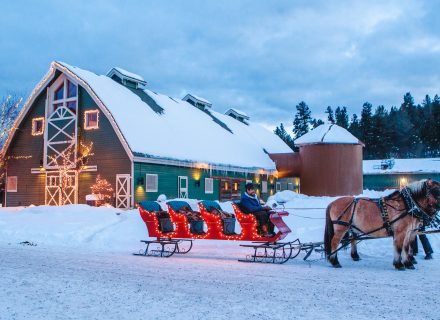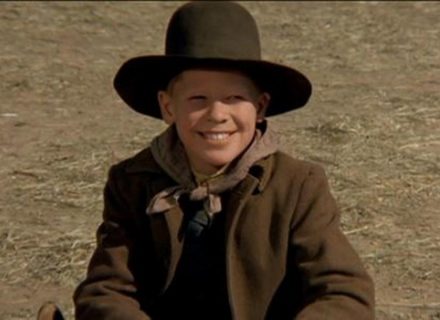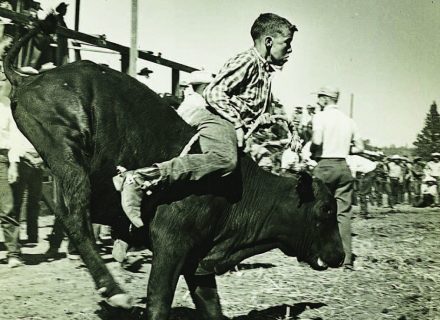Trinidad born Western artist A.R. Mitchell's work has been celebrated for a century for its ability to depict "the actual West."
Early in his career, Arthur Roy Mitchell received sound financial advice from fellow painter Harvey Dunn: "When they ask you what a picture is for," Dunn said, "tell them, 'for sale.'"
Mitchell's oil-on-canvas Western scenes were museum-quality, and that's where they now reside: in the museum that bears his name in Mitchell's hometown of Trinidad, Colorado, just 11 miles north of the New Mexico state line. But they first achieved popularity almost 100 years ago, when he took Dunn's advice and sold them to publishers to grace the covers of such Western pulp magazines as Ace-High, True West, and Frontier Stories. From the 1920s through the 1940s, Mitchell's illustrations appeared on more than 160 covers. Readers perusing the newsstands would often find his vivid, colorful images appearing side-by-side on different publications.
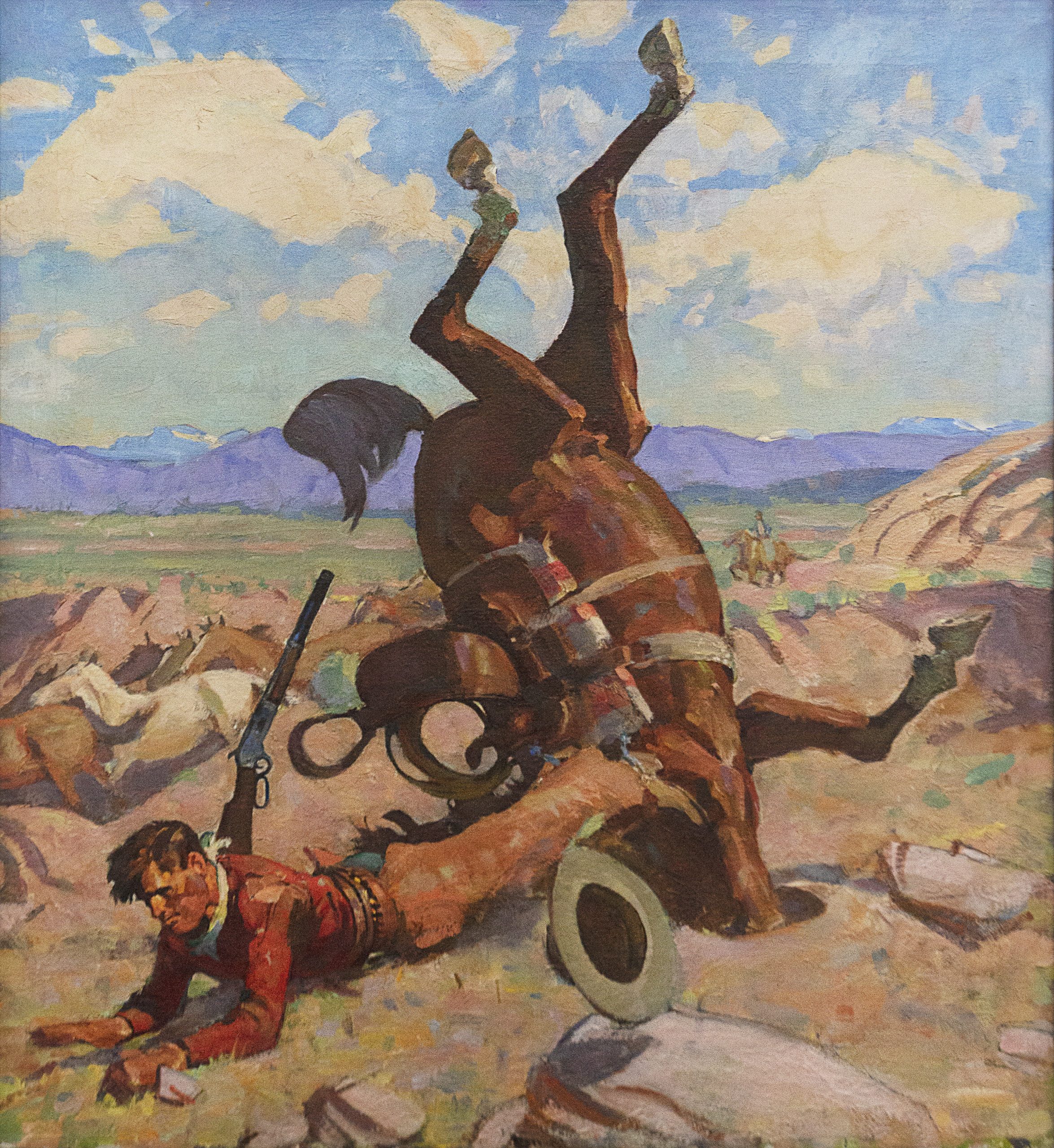 A Bad Fall (1930s), oil on canvas
A Bad Fall (1930s), oil on canvas
"They were not the Hollywood version of the West; they were scenes from his life in the actual West," says Allyson Sheumaker, the museum's executive director. "Everyone in his paintings were people he knew."
The A.R. Mitchell Museum of Western Art opened in 1981 and 10 years later moved into a 44,000-square-foot space built more than a century ago as a department store. "The building is really part of the collection," Sheumaker says. "Our display cases, furniture, and hardwood floors are all from the old store." A horseshoe-shaped mezzanine level features exhibits from visiting artists.
They were not the Hollywood version of the West; they were scenes from his life in the actual West.
Mitchell was born in Trinidad in 1889, just a few years after Bat Masterson turned in his badge as the town's marshal. He grew up four blocks from the Old Santa Fe Trail, where covered wagons carried pioneers west until the track was laid for the Atchison, Topeka and Santa Fe Railway. As a boy, when he couldn't find paper to capture the frontier scenes that surrounded him, he'd draw with chalk on the town's wooden sidewalks.
At age 17 he worked the spring and fall roundups for the Adams Cattle Company in New Mexico, but Mitchell's passion for art ultimately surpassed his dream of being a cowboy. After military service, he began his formal art training in New York under Harvey Dunn at the Grand Central Art School in Grand Central Station.
Mitchell sold his first paintings in January of 1927 for the covers of Cowboy Stories and Northwest Stories. In the 1930s he also contributed boot-jacket covers from the Houghton Mifflin Company. One of them — The End of Black Jar, about bandit Thomas (Black Jack) Ketchum — must have brought back memories: "When Mitchell was 11 years old, he had a ticket to Black Jack Ketchum's hanging in New Mexico. He didn't get to go because he couldn't find a way to get there," Sheumaker says.
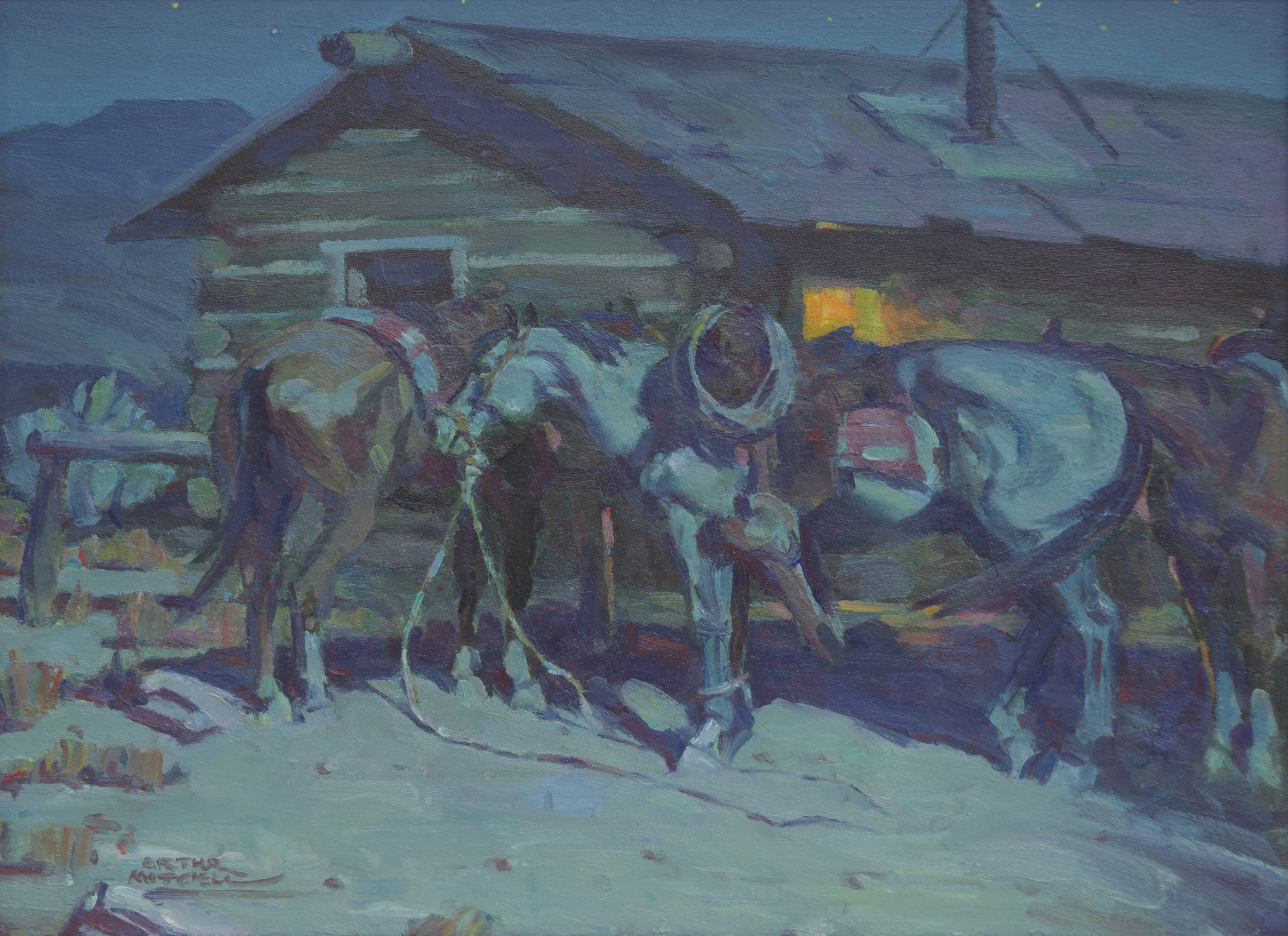 Three for the Road, oil on board
Three for the Road, oil on board
He returned in the 1940s to Trinidad, where he continued to paint while teaching art at the local junior college. In 1955 he purchased the town's oldest structure, the adobe Baca House, and turned it into the Pioneer Museum. Mitchell served as the museum's curator until 1975.
It was his close ties to the community, which endured until Mitchell's death in 1977, that motivated his sister Ethel to find a local home for his artwork. "He retained ownership of many of the oil-on-canvas paintings that he did," Sheumaker says. "He knew that most would end up in a closet, so he always asked to keep them, which is great for us because we have so many of them."
The A.R. Mitchell Museum of Western Art houses 340 original works, both paintings and magazine covers, as well as thousands of sketches he drew before creating the final published versions. Even these reveal Mitchell's gift for accuracy in the details of Western gear and his command of the anatomy of horses.
The museum also features paintings Mitchell had acquired in trade with friends and contemporaries Harvey Dunn and Harold von Schmidt, as well as his collections of textiles and Native American pottery.
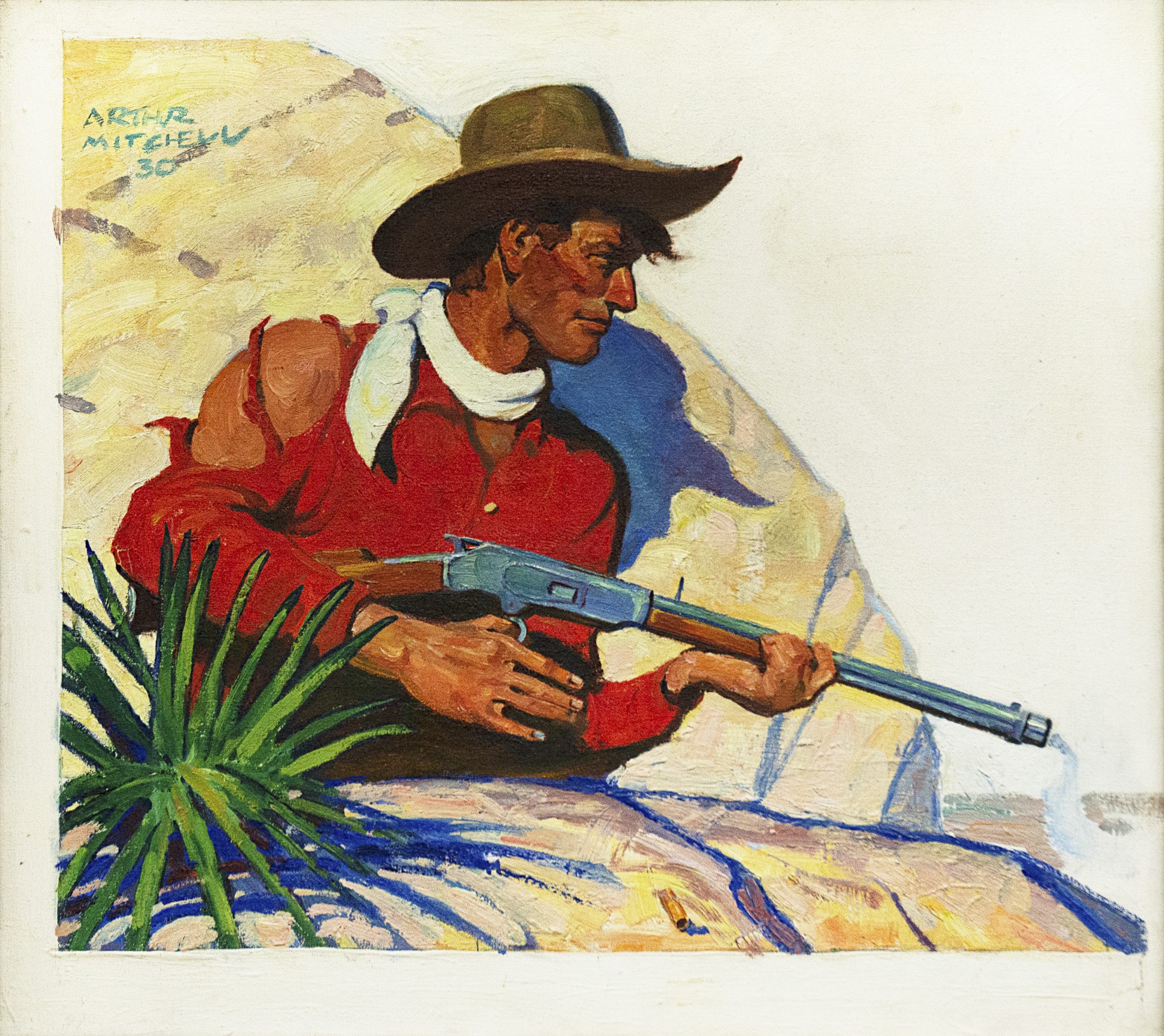 Between a Rock and a Hard Place
Between a Rock and a Hard Place
For more information on A.R. Mitchell and his namesake museum, visit armitchellmuseum.com.














